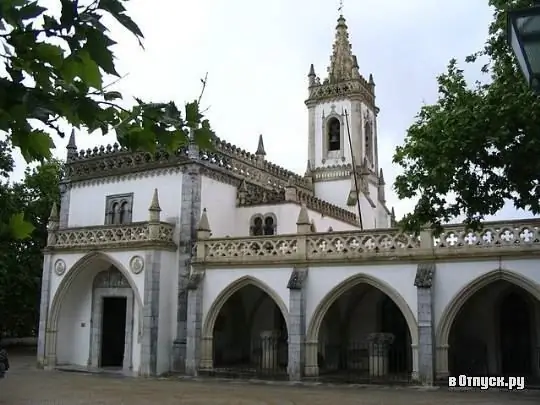
Description of the attraction
The Regional Museum was opened in 1927-1928. The expositions of the museum are located in the premises of the former Franciscan monastery of Nossa Senhora do Concezan, which belonged to the female monastic order of the Clarissas.
The monastery was founded in the middle of the 15th century by Infante Ferdinand I, Duke of Viseu and Duke of Beja and was built next to the Ducal Palace. The imposing building of the monastery is adorned with lattice architrave around the perimeter. Above the covered entrance, which is located in the eastern part of the building, there is a multi-sash window with pillars, behind which is the room of the abbess of the monastery. Such windows were characteristic of the Manueline and Moorish styles of architecture. The entrance door is built into a lancet S-shaped arch. A square bell tower and a spire with Gothic leaf ornaments rise above the complex.
From the lobby you can get into the luxurious Baroque chapel, which consists of one nave with a semicircular vault. Inside there are three wooden carved altars covered with gilding (one dates back to the 17th century and is dedicated to St. John the Evangelist, and the other two - from the 18th century and are dedicated to St. Christopher and St. Benedict). The fourth altar, dedicated to Saint John the Baptist, is decorated with Florentine mosaics by the renowned woodcarver Jose Ramalho. The walls are decorated with panels "azulesush", which depict scenes from the life of John the Baptist.
The museum houses a collection of paintings by Flemish, Spanish and Portuguese artists from the 15th century to the 18th century. Also in the museum you can see the tombstones of the first abbess of the monastery, Donna of Uganda, Infanta Ferdinando and his wife Beatrice of Portugal. Part of the museum is devoted to archeology. In 1987, collector Fernando Nunes Ribeiro donated his collection of archaeological finds to the regional museum, which is displayed on the top floors. The collection includes artifacts from the Romanesque and Visigothic periods, gravestones from the Bronze Age with antique inscriptions and stelae from the Iron Age.






